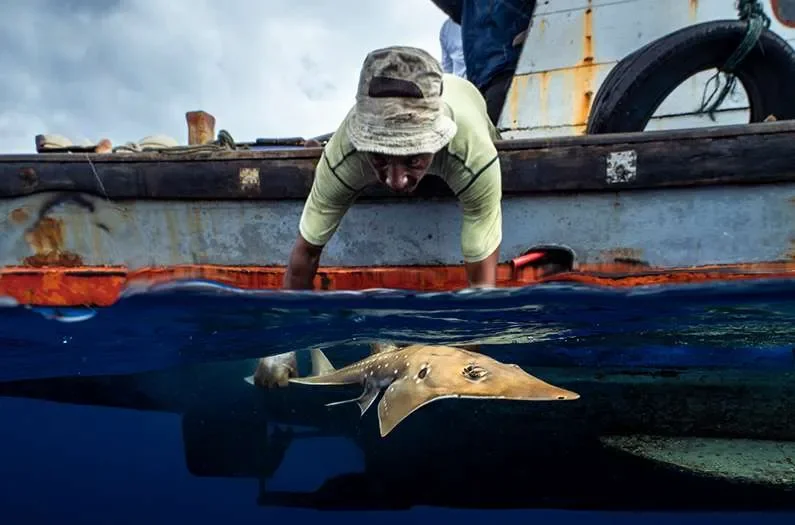
The Ups and Downs of Paying Fishers to Protect Endangered Sharks
Conservation efforts can take unexpected turns, and a recent initiative to protect endangered sharks and rays in Indonesia is a prime example. Aiming to mitigate overfishing and bycatch, conservationists began compensating fishers for releasing these vulnerable species back into the ocean. However, a study published in Science Advances reveals that this well-intentioned approach may be leading to unintended consequences, ultimately harming the very species it seeks to protect.
Sharks and rays, including critically endangered hammerhead sharks and wedgefish, are caught unintentionally in the nets of local fishers in Indonesia. To address this pressing issue, the marine conservation group Kebersamaan Untuk Lautan, led by conservation scientist Hollie Booth, implemented a controlled trial offering cash payments for the safe release of these species. Payments were designed to match the market value of the fish, typically ranging from $1 to $134, depending on the species and region.
At first glance, the program appeared successful. Fishers who participated in the initiative reduced wedgefish captures by 25% and reported fewer fatalities among this species. However, the success was short-lived when comparison data from non-participating fishers revealed a shocking twist: the group receiving payments for releases was inadvertently incentivized to catch more sharks and rays. This resulted in a staggering 44% increase in hammerhead fatalities among boats that were offered compensation.

This disparity in outcomes demonstrates the complex dynamics of conservation incentives. While the intention was to promote the release of endangered species, some fishers viewed the payments as a green light to catch more fish, perceiving it as more profitable than merely selling neglected bycatch. Paul Ferraro, a co-author of the study, stresses the importance of robust experimental designs in evaluating such incentive-based conservation programs before they are implemented on a larger scale.
In response to the alarming findings, Booth and her team are adjusting the program by refining the size of the payments and capping the number of compensated releases fishers can claim in a given time. Additionally, they are enrolling fishers in gear-swap initiatives that provide less harmful fishing methods to further protect endangered species.
Ultimately, this case study emphasizes the necessity of carefully designing conservation incentives while assessing their potential impacts on both wildlife and fisher livelihoods. "Incentive-based programs play a critical role in effective and socially just nature conservation," says Booth. As conservationists continue to navigate these complex waters, collaboration with local fishers can prove essential in crafting successful solutions.
What do you think? Can cash incentives effectively contribute to marine conservation, or do they pose too many risks? Share your thoughts in the comments below!